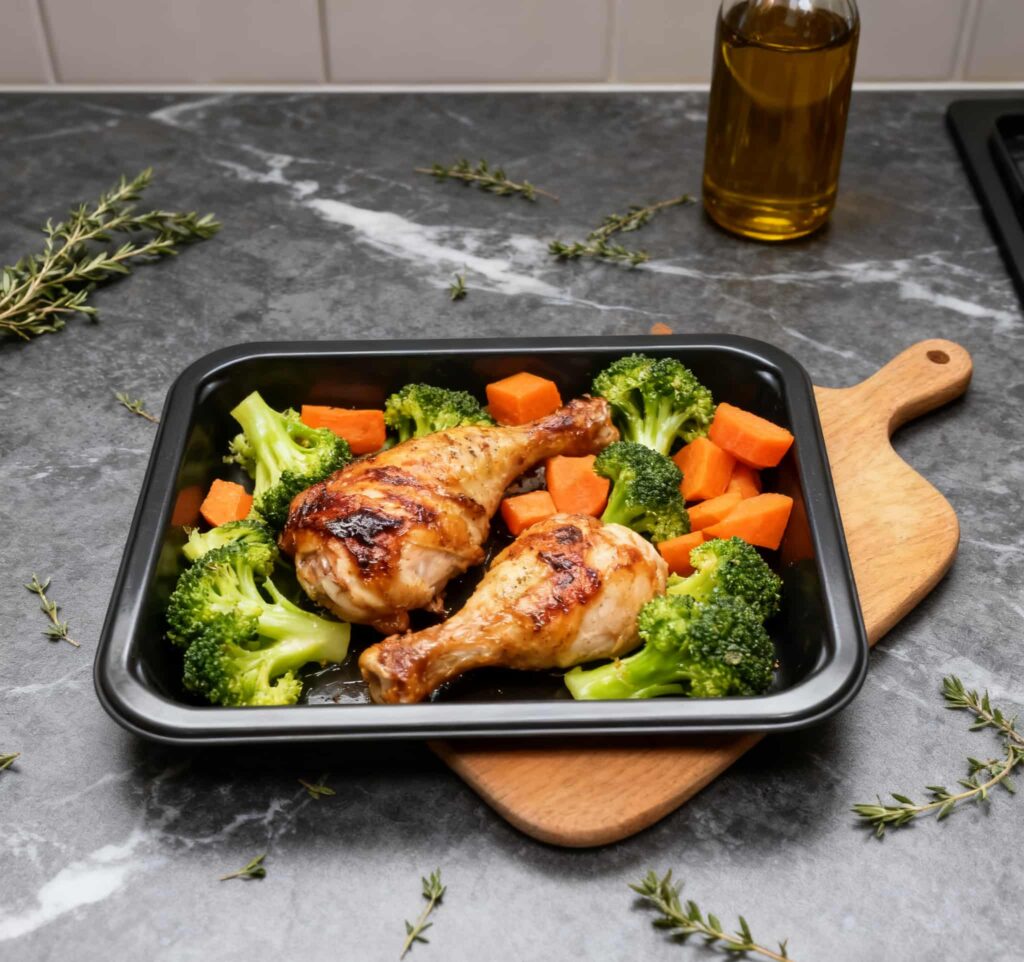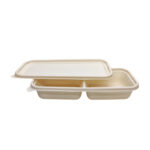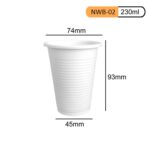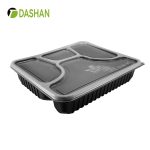Disposable CPET Airline Trays are the preferred choice for British Airways due to their superior heat resistance, durability, and environmental benefits. These trays withstand high temperatures for safe reheating, maintain meal integrity during transport, and enhance food presentation. Compliant with international food safety standards and recyclable, CPET trays support airline sustainability initiatives while improving passenger dining experiences across short-haul and long-haul flights.
Introduction
Airline catering has evolved significantly since its inception in the early 20th century. Initially, meals were simple and served in basic containers. However, as air travel became more prevalent, the complexity of in-flight meal services increased. Logistics, food safety, and passenger satisfaction became paramount considerations. British Airways (BA), as a leading global airline, has consistently prioritized these factors, seeking innovative solutions to enhance the in-flight dining experience.
One such solution is the adoption of Disposable Crystalline Polyethylene Terephthalate (CPET) trays. These trays have become a preferred choice for BA due to their numerous advantages in terms of heat resistance, durability, and environmental sustainability. This article delves into the reasons behind British Airways’ preference for CPET trays, exploring their benefits, applications, and the challenges associated with their use.

Understanding CPET
Chemical Structure and Physical Properties
CPET is a thermoplastic polymer derived from polyethylene terephthalate (PET). Through a crystallization process, CPET achieves enhanced heat resistance and structural integrity compared to standard PET. This crystallization imparts a higher melting point, allowing CPET to withstand temperatures up to 230°C without deformation.
The material’s crystalline structure also contributes to its rigidity and resistance to impact, making it suitable for applications where durability is essential. Additionally, CPET exhibits excellent barrier properties, protecting food from external contaminants and preserving its freshness.
Food Safety Certifications
CPET trays comply with international food safety standards, including those set by the U.S. Food and Drug Administration (FDA) and the European Union’s food contact regulations. These certifications ensure that CPET trays are safe for direct contact with food, do not leach harmful substances, and maintain the integrity of the food they contain .
Advantages of CPET Trays for British Airways
Heat Resistance and Microwave Compatibility
CPET trays can withstand temperatures up to 230°C, making them ideal for reheating meals in onboard ovens without the risk of warping or releasing harmful substances . This heat resistance ensures that meals retain their quality and taste, providing passengers with a satisfying dining experience.
Moreover, CPET trays are microwave-safe, allowing for quick and efficient reheating of meals, which is crucial in the fast-paced environment of airline catering.
Durability and Leak Resistance
The robust nature of CPET trays ensures that they can withstand the rigors of handling, stacking, and transport without compromising their structural integrity. This durability is essential in preventing leaks and spills, which can lead to food contamination and customer dissatisfaction.
Additionally, CPET trays are resistant to grease and moisture, further enhancing their suitability for containing a wide variety of foods, including those with high fat content or liquid components .
Environmental Benefits
CPET trays are recyclable, contributing to the reduction of waste and the promotion of sustainability within the airline industry. Many CPET trays are made from recycled PET, supporting the circular economy and reducing the demand for virgin plastic .
Furthermore, the lightweight nature of CPET trays reduces the overall weight of meals, leading to lower fuel consumption during flights and a decrease in the airline’s carbon footprint.
Food Presentation and Portion Control
The clear, glossy surface of CPET trays enhances the visual appeal of meals, making them more appetizing to passengers. The design of CPET trays allows for effective portion control, helping airlines manage food costs and reduce waste.
Additionally, CPET trays can be customized with airline branding, adding a professional touch to the in-flight dining experience and reinforcing brand identity.

Applications in Airline Catering
Short-Haul vs. Long-Haul Flights
On short-haul flights, where meal preparation time is limited, CPET trays facilitate quick and efficient reheating, ensuring that meals are served promptly and at the optimal temperature. On long-haul flights, CPET trays maintain the quality of meals over extended periods, providing passengers with a consistent dining experience throughout the journey.
First Class vs. Economy Class
In First Class, where passengers expect premium services, CPET trays are used to present gourmet meals in an elegant and appealing manner. In Economy Class, CPET trays ensure that meals are served efficiently and maintain their quality, enhancing passenger satisfaction across all service classes.
Meal Types and Packaging Solutions
CPET trays are versatile and can accommodate a wide range of meal types, including hot entrées, salads, and desserts. Their design allows for effective segregation of different food components, preserving the integrity and presentation of each item.
The use of CPET trays streamlines catering operations by reducing the need for additional packaging materials and simplifying the reheating process, leading to improved efficiency and reduced food waste.

Comparative Analysis: CPET vs. Other Materials
| Feature | CPET | PET | Aluminum | PP |
|---|---|---|---|---|
| Heat Resistance | Up to 230°C | Up to 70°C | Up to 250°C | Up to 120°C |
| Microwave Safe | Yes | Yes | No | No |
| Oven Safe | Yes | No | Yes | No |
| Recyclability | High | Moderate | Low | Moderate |
| Durability | High | Moderate | High | Low |
| Leak Resistance | High | Moderate | High | Low |
| Environmental Impact | Low (recycled content) | Moderate | High | Moderate |
CPET trays offer a balance between heat resistance, recyclability, and durability, making them a preferred choice over PET and aluminum in many applications.
Challenges and Considerations
While CPET trays offer numerous benefits, they also present certain challenges. The manufacturing process for CPET trays can be energy-intensive, and the availability of recycled PET material can vary. Additionally, the cost of CPET trays may be higher than that of other materials, which could impact budget considerations for airlines.
Furthermore, the widespread adoption of CPET trays requires coordination across the airline’s supply chain, including suppliers, caterers, and ground handling staff, to ensure consistent quality and performance.
Frequently Asked Questions (FAQ)
Q1: What is CPET?
CPET stands for Crystalline Polyethylene Terephthalate, a thermoplastic material known for its heat resistance and durability.
Q2: Can CPET trays be used in the microwave?
Yes, CPET trays are microwave-safe and can withstand high temperatures without warping or releasing harmful substances.
Q3: Are CPET trays recyclable?
Yes, CPET trays are recyclable and are often made from up to 70% post-consumer recycled content.
Q4: What are the temperature limits for CPET trays?
CPET trays can withstand temperatures up to 230°C without warping or releasing harmful substances.
Q5: How do CPET trays compare to other materials?
CPET trays offer a balance between heat resistance, recyclability, and durability, making them a preferred choice over PET and aluminum in many applications.
Conclusion
Disposable CPET trays provide a combination of heat resistance, durability, and environmental benefits that make them an ideal choice for airline catering. Their ability to withstand high temperatures, maintain food quality, and align with sustainability goals positions CPET trays as a preferred option in the aviation industry.
British Airways’ commitment to innovation and passenger satisfaction is reflected in its adoption of CPET trays, which enhance the in-flight dining experience while supporting the airline’s sustainability initiatives.
References
Food Standards Agency – Food Contact Materials Guidance
https://www.food.gov.uk/business-guidance/regulated-products/food-contact-materials-guidance
UK Government – Packaging (Essential Requirements) Regulations
https://assets.publishing.service.gov.uk/media/5a74dbbae5274a59fa71580d/BIS-15-460-packaging-essential-requirements-regulations-gov-guidance-notes.pdf
SGS – Food Contact Product Certification Mark
https://www.sgs.com/en-gb/services/sgs-food-contact-product-certification-mark
TÜV SÜD – Certification Mark for Products with Food Contact
https://www.tuvsud.com/en-gb/services/product-certification/ps-cert/certification-mark-for-products-with-food-contact
Intertek – Food Contact Materials Testing & Food Packaging Analysis
https://www.intertek.com/packaging/testing/food-analysis/
Xiamen Dashan – Supplier of CPET Lunch Boxes
https://www.dashanpacking.com




